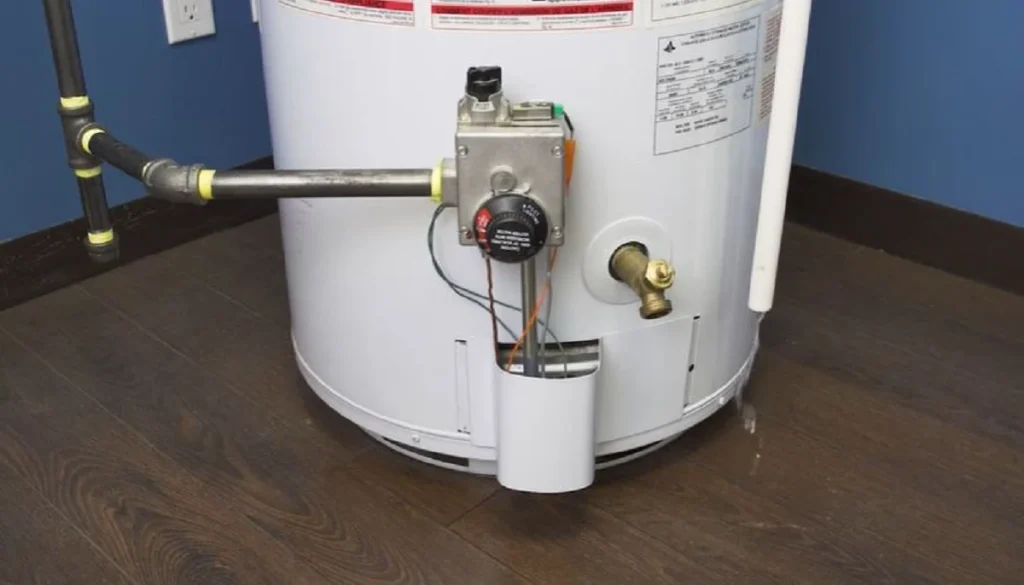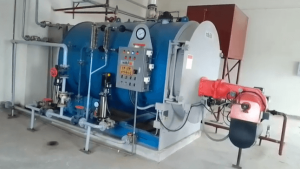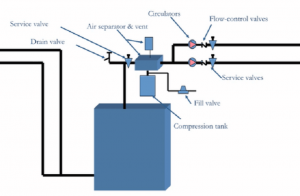Disclosure: As an Amazon Associate, I earn from qualifying purchases. Learn more
Water dripping inside a water heater can indicate several potential issues, each requiring specific attention. This occurrence is not just a nuisance but can signal underlying problems needing immediate resolution.
One primary cause of internal water dripping is a malfunctioning drain valve. Located at the tank’s base, this valve can allow water to leak if it’s not tightly sealed or is damaged. Regular inspection and tightening, or replacement if necessary, can address this issue.
In gas water heaters, water dripping into the burner area, especially between heating cycles, is particularly concerning. This could be a symptom of tank failure or a severe leak, demanding prompt professional assessment.
When new water fills a cold tank, condensation can form inside, mimicking a leak. Typically, this resolves once the tank reaches its operating temperature. However, persistent water presence, especially when the tank is warm, warrants further investigation.
Some water heaters use expanding foam insulation, which can occasionally produce sounds resembling water dripping. While usually not a cause for alarm, distinguishing these noises from actual dripping is crucial. Actual leaks can lead to efficiency loss, and water damage, and even pose safety risks in gas water heaters.
If you notice water leaking, safety dictates turning off the power supply before investigating. Identifying the leak’s source is crucial, as solutions can range from tightening a valve to needing a new water heater.
Early detection and appropriate measures can mitigate damage and ensure the heater’s safe and efficient operation.
Water Dripping Inside Water Heater: Causes and Fixes
Water dripping inside a water heater can be caused by various issues, each requiring a different approach to fix.
1. Faulty Drain Valve
The drain valve, located at the bottom of the tank, can be a common culprit. If not properly closed or if it’s worn out, water can escape, causing dripping.
To fix this, first ensure the valve is fully closed. If the dripping persists, the valve might need replacing. Turn off the water supply and power to the heater, drain the tank, and replace the valve with a new one, ensuring it’s securely tightened and sealed.
2. Condensation
During the initial start-up or when cold water enters the tank, condensation can form inside, which might appear like a leak. This is usually temporary and resolves once the heater warms up.
If condensation is excessive, it may indicate that the heater is too large for your needs, or there’s an issue with the venting system. Ensuring proper sizing and ventilation for your water heater can prevent excessive condensation.
3. Internal Tank Leak
A leak inside the tank can be due to corrosion or damage. This is a more serious issue that often requires tank replacement. Look for signs of rust or water pooling around the heater.
A professional assessment is recommended to determine if repair or replacement is the best course of action.
4. Overflow due to Pressure Issues
If the pressure inside the tank is too high, it can lead to water dripping through the pressure relief valve. Check the pressure settings and adjust them if necessary. If the valve itself is faulty, it should be replaced. Regular monitoring of pressure levels can prevent such issues.
5. Loose Inlet or Outlet Connections
Loose connections at the inlet or outlet can also lead to dripping inside the tank. Tighten any loose fittings and check for worn-out components that might need replacing. Regular maintenance checks can help identify and resolve these issues before they lead to significant problems.

Dripping Hazards on Water Heater Pilot Light
Water dripping onto the pilot light of a water heater is a significant concern that can compromise the heater’s functionality and safety. The pilot light is an essential component in gas water heaters, providing the flame needed to ignite the gas and heat the water.
When water drips onto it, the immediate risk is the pilot light being extinguished, leading to the gas not being burned efficiently. This situation can cause gas to accumulate, posing a risk of gas leaks or explosions.
To address this issue, first identify the source of the drip. Common causes include leaks from the tank or internal components, condensation issues, or a faulty pressure relief valve. It’s crucial to rectify these issues promptly.
Repairing leaks, ensuring proper tank insulation to prevent condensation, and replacing any faulty valves are necessary steps.
Read Also: Should You Drain Your Water Heater? How Often?
Water Compromising the Heater Burner
Water dripping onto the burner of a water heater can hinder its performance and pose safety risks. The burner, a critical component in gas water heaters, is responsible for heating the water.
When water drips onto the burner, it can cause uneven heating, inefficiency, and potential damage to the burner itself. This issue often stems from leaks within the tank or condensation problems.
Fixing this problem involves identifying the leak source and resolving it. Common solutions include tightening loose fittings, replacing damaged components like valves or gaskets, and ensuring the tank has proper insulation to prevent condensation.
Regular inspections and maintenance of the water heater can preemptively identify potential leak sources, helping to avoid water reaching the burner.
If the issue is not readily apparent or easy to fix, professional assessment and repair are recommended to ensure the safe and efficient operation of the water heater.
Preventive Measures for Internal Water Heater Drips
Preventing water from dripping inside a water heater is crucial for its longevity and safe operation. Internal dripping can lead to various issues, including corrosion, inefficiency, and potential damage to critical components.
Preventive actions include regular maintenance checks, proper installation, and addressing condensation issues.
Regular maintenance, including inspecting for leaks, checking the condition of valves and gaskets, and flushing the tank to remove sediment, is key. Proper installation is also crucial, ensuring all fittings are secure and there is no strain on any connections.
Managing condensation by ensuring the heater operates at the right temperature and has adequate insulation is important.
For gas water heaters, proper ventilation is essential to prevent condensation buildup.
Taking these preventive measures can significantly reduce the risk of internal dripping, ensuring the water heater operates efficiently and safely over its lifespan.

